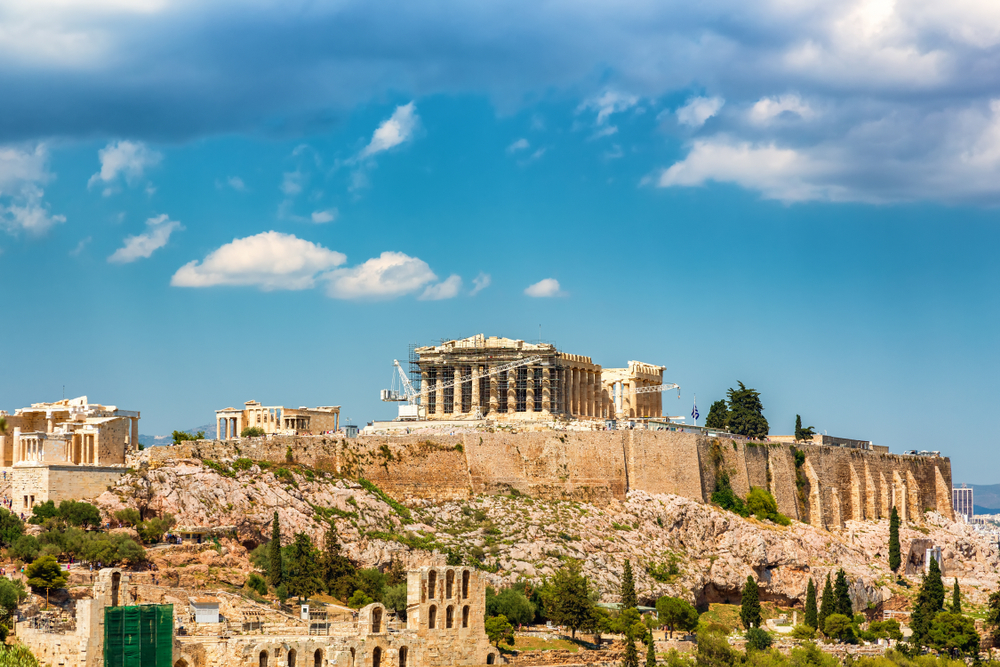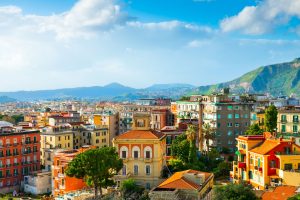Athens, the capital of Greece, is a city full of myths, history, and Mediterranean flair. Even in ancient times, it was a metropolis of art, philosophy, and democracy, and even today you can still feel the breath of the past in every alley. Yet Athens is not merely an open-air museum: modernity has long since taken hold and blends with the ancient heritage into a unique mix of tradition and urban life. Anyone who has strolled through the old town districts of Plaka and Monastiraki, seen the Acropolis in the morning light, and enjoyed a glass of ouzo in a taverna quickly understands why Athens captivates so many visitors. This article will guide you to the most exciting places, the best views, and a few insider tips to make your visit to Athens unforgettable.
Top Attractions in Athens
Acropolis
The Acropolis is the most famous landmark of the city and majestically towers over the rooftops of Athens. Its best-known structure, the Parthenon, was once a temple dedicated to the city’s patron goddess Athena. The site also includes other ancient treasures such as the Erechtheion and the Temple of Nike – a true paradise for history lovers. Since 1987, the Acropolis has been a UNESCO World Heritage Site and is definitely a must-see for all explorers.
Fun Fact: Archaeologists discovered that there are hardly any straight lines in the Parthenon, creating the illusion of perfect symmetry.
Agora
Below the Acropolis lies the ancient Agora, once the social, political, and cultural center of Athens. It was here that people debated, traded, and shaped the future of democracy. Today, the area transports you to times long past: numerous ruins, such as the well-preserved Temple of Hephaestus, tell the story of life in ancient Athens. Amid the ruins, it’s easy to imagine philosophers like Socrates sharing their wisdom here. A walk through the Agora feels like a journey into antiquity.
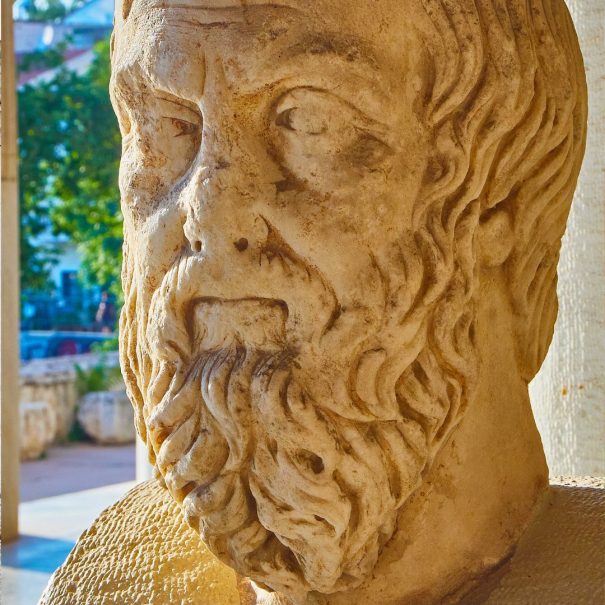
Plaka & Anafiotika
The old town district of Plaka nestles at the foot of the Acropolis and charms with narrow lanes, colorful facades, and a lively bustle of small shops, tavernas, and cafés. Particularly worth seeing is the hidden Anafiotika neighborhood: built in the 19th century by craftsmen from the Cycladic island of Anafi, its white, cubic houses are strongly reminiscent of the Aegean. It almost feels like being on an island in the middle of the big city. While strolling through the lanes, you can enjoy a Greek coffee or browse for souvenirs in small craft shops.

Hadrian's Library
Hadrian’s Library was built in the 2nd century AD by Emperor Hadrian and once served as an important cultural center with reading rooms and lecture halls. Today, only ruins remain, but they still reflect the former grandeur of this site. It’s worth taking a moment to imagine scholars exchanging knowledge on papyrus scrolls here – or perhaps debating the best quality of olive oil. For history lovers, this place is another puzzle piece illustrating Athens’ significance in antiquity.

Temple of Olympian Zeus
Once the largest temple in ancient Greece, the Olympieion (Temple of Olympian Zeus) impresses with its imposing remaining columns. Of the original 104 Corinthian columns, 15 still stand today – one has been lying on the ground since a storm in 1852. The monument is often overlooked, but those who visit are rewarded with a magnificent setting. Especially in the evening, when the temple is illuminated, it appears almost mystical.
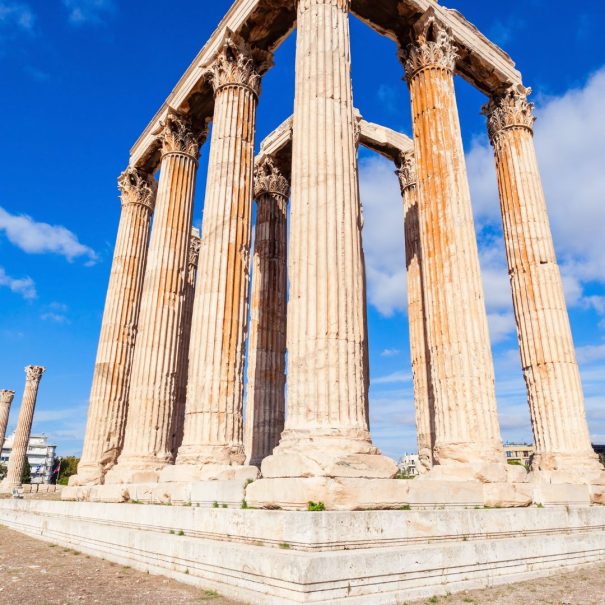
Syntagma Square & Changing of the Guard
Syntagma Square is the political heart of Athens and the location of the Greek Parliament. Here you can witness the ceremonial changing of the guard by the Evzones, who perform in traditional uniforms (with pompoms on their shoes!) and follow a very unique rhythm. Around the square, numerous cafés and shops invite you to linger. The best time to visit is on the hour, when the soldiers showcase their precise choreography.
Fun Fact: The famous fustanella, the pleated skirt of the Evzones, supposedly has 400 pleats – each one symbolizing a year Greece was under Ottoman rule.

National Garden
Right next to the parliament building stretches the expansive National Garden, a green oasis of calm in the middle of the city. Here you’ll find shady paths, a small zoo, and even a historic greenhouse. The park was designed in the 19th century by order of Queen Amalia and hosts plants from all over the world. Whether for a brief break from the hustle and bustle or a relaxed walk – the National Garden is a little hidden gem for those who want to experience the quieter side of Athens.
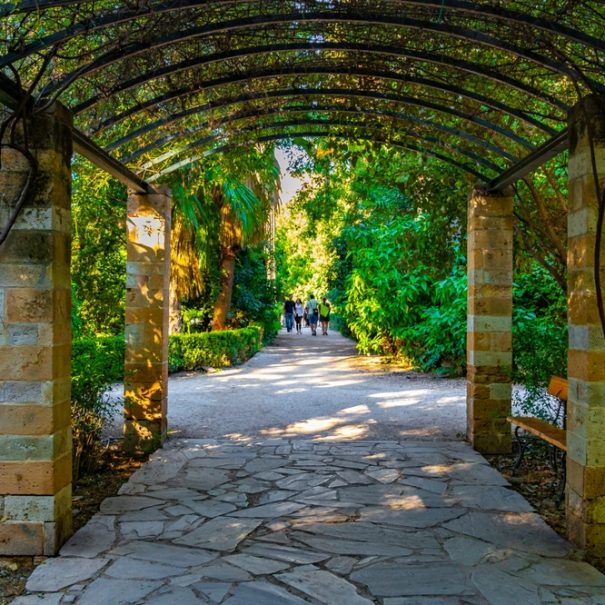
Monastiraki & Flea Market
Monastiraki is one of the liveliest neighborhoods in Athens, famous for its flea market and its colorful mix of antiques, vintage clothing, and street food. Especially on Sundays, the area becomes a real labyrinth of stalls where you can browse for hours. If you’re looking for unique souvenirs or curiosities, you’ll surely find them here. Restaurants around Monastiraki Square also offer perfect opportunities to sample Greek cuisine while observing the bustling scene.
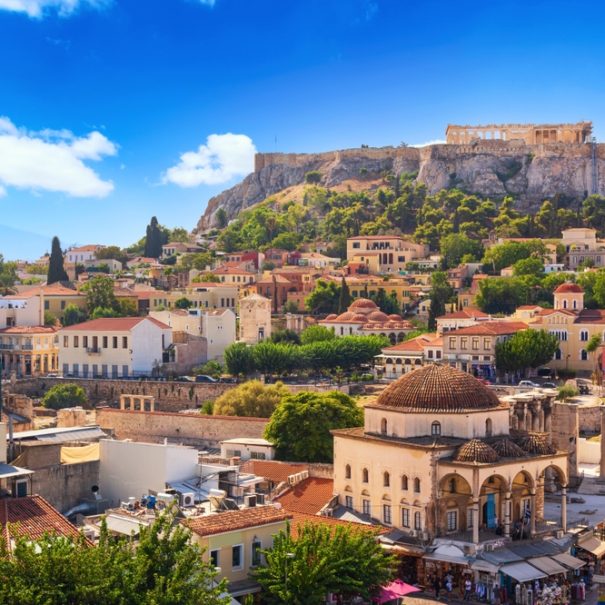
Best Scenic Viewpoints
Lycabettus Hill
If you want to see Athens from above, Lycabettus Hill, at 277 meters high, offers the best panoramic view. Whether on foot for the sporty types or via the funicular for those wanting a shortcut – once at the top, a spectacular view over the entire city to the sea awaits. Especially at sunset, the golden rays bathe the Acropolis and surrounding houses in warm light. A small café provides refreshments before the descent.
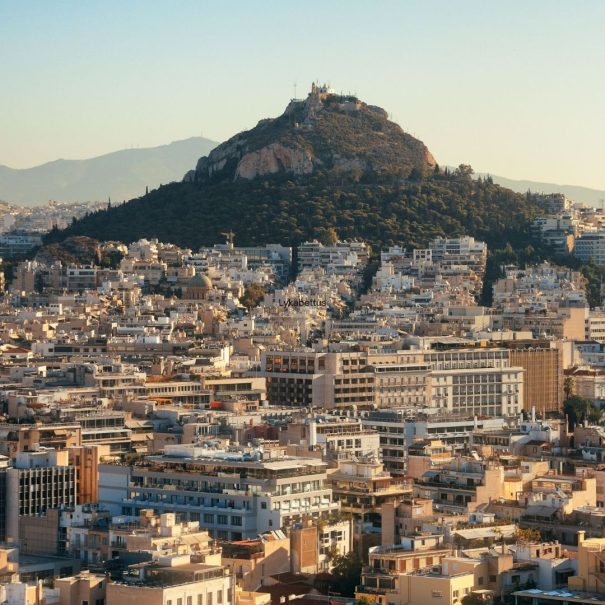
Areopagus (Areios Pagos)
Right next to the Acropolis is the Areopagus, a rocky hill that once served as a court site. Today, it’s a popular viewpoint where you can enjoy views of the city, Philopappos Hill, and the Acropolis. Its proximity to the old town makes it ideal for a short break after a tour of the ancient sites. Caution when climbing: the rock can be slippery in places, so best not to wear ancient-style sandals without grip.

Culinary Highlights for Food Lovers
Klimataria
Klimataria is a traditional Greek restaurant in the heart of the city that has been delighting locals and tourists for decades with authentic dishes. You can sample mezze platters, enjoy juicy souvlaki, and sip good house wine. The atmosphere is familial and often features live music – a place where you can truly taste the real Athens.
Psarras Taverna
Located in the narrow streets of Plaka, this taverna not only serves delicious dishes but also offers a picturesque view of the surrounding old town houses. The menu ranges from traditional moussaka to fresh fish specialties. Outdoor seating is especially popular, where you can watch the bustle of the pedestrian zone while dining.

Discover 70+ cities worldwide with professional audio guides – and counting! Thanks to integrated navigation, you’ll easily find your way, even without an internet connection. Whether it’s famous highlights or hidden gems – Plazes brings exciting tours and vivid stories straight to your smartphone. Completely free and no registration required. Download now and get started!
Ergon House
A modern food hub combining Greek delicacies, a market hall, and a restaurant under one roof. Be sure to try the olive oil from various regions of Greece and take a few bottles home. Vegetarians and vegans will also find a wide selection of tasty dishes here. If you’re interested in Greek gourmet products, browse the market stalls for olives, cheese, and other regional specialties.
Fun Fact: Greece is one of the world’s largest producers of olive oil – you’ll notice it the moment you dip your first piece of bread into a delicious oil blend.
Insider Tips & Hidden Gems
Philopappos Hill
Not quite as high as Lycabettus, Philopappos Hill also offers a fantastic view of the Acropolis and the historic center. You’ll be surprised how peaceful it is here – a real insider tip for those looking to escape the tourist crowds at sunset. The hill is dotted with small chapels and ruins that make the walk even more interesting.

Centrale Municipal Athens Market (Varvakios Agora)
To experience authentic Athens, you should visit the central market. Life pulses between meat, fish, and vegetable stalls. In between, you’ll find small eateries offering fresh delicacies. Watch the loud haggling of the vendors and let yourself be inspired by the variety of Greek products.

Museums for Culture and History Enthusiasts
Acropolis Museum
The modern Acropolis Museum is located just below the Acropolis and houses numerous original finds from the temple complex. Through the glass floors, you can see the excavations directly beneath your feet, giving you a sense of how much history lies hidden beneath the city. A visit is especially worthwhile to understand the development of the Acropolis. More info can be found on the official website of the Acropolis Museum.
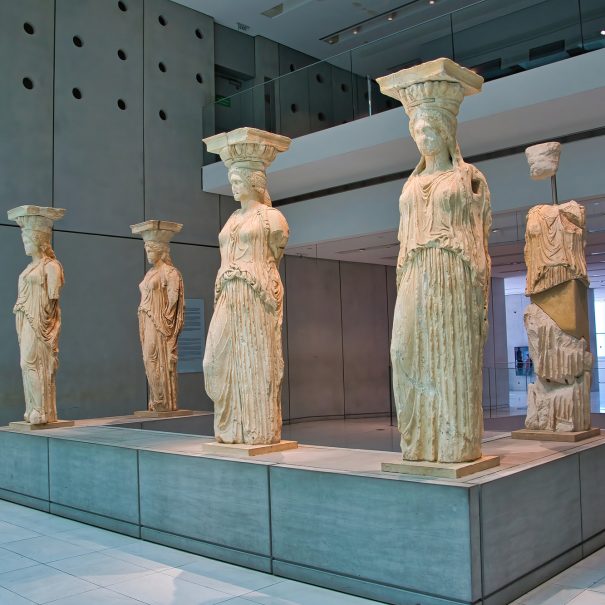
National Archaeological Museum
If you want to learn more about the ancient world of Greece, this is the place to be: the country’s largest archaeological museum displays precious finds from various eras. The famous gold mask of Agamemnon and countless sculptures, vases, and frescoes let you immerse yourself in thousands of years of history. Plan plenty of time – the collections are extensive.
Benaki Museum
The Benaki Museum is a true treasure trove of Greek art and cultural history. In addition to ancient artifacts, you’ll find Byzantine icons, traditional costumes, and artworks from the 19th and 20th centuries. The exhibition is diverse and offers a comprehensive picture of Greek history – from antiquity to modern times.
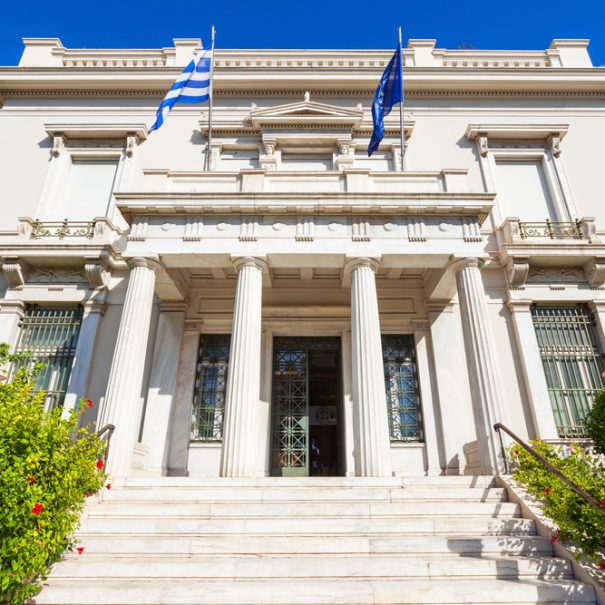
Shopping & Souvenirs
Athens is a paradise for shoppers: from international brands to small boutiques and markets with traditional crafts, you’ll find everything here. In the shopping streets Ermou and Kolonaki, fashion stores, jewelers, and shoe shops line up. If you’re more interested in traditional souvenirs, the neighborhoods of Plaka and Monastiraki offer stalls with ceramics, leather sandals, and all kinds of handmade goods.
Popular Greek delicacies like olive oil, honey, herbal tea, and spices can be purchased at the central market or in small delicatessens. A piece of Greek marble as décor, a hand-painted plate, or a traditional bouzouki (string instrument) makes a beautiful souvenir. Be sure to check the origin of handmade products to avoid buying mass-produced goods.
If you’re interested in antiques, you’ll find shops and stands around the Monastiraki flea market offering books, records, antique furniture, and much more. Don’t be shy about bargaining – haggling is simply part of Greek culture!

Tips for Cruise Passengers
If you’re arriving in Piraeus, Athens’ port, by cruise ship, you have several options for getting to the city center. For example, you can take Metro line 1 from Piraeus Station, which gets you to the city center (Monastiraki or Omonia) in about 20 minutes. Alternatively, taxis are available directly at the cruise terminal. The ride to the center costs between 15 and 20 euros, depending on traffic.
If you want to explore the surroundings on your own, several car rental companies are located near the port. This way, you can take trips to Cape Sounion (Temple of Poseidon) or Corinth.
Tips for Solo Travelers
Athens is a hospitable city where solo travelers will quickly feel at home. The metro, buses, and trams cover most parts of the city, so getting around is easy. Want to meet new people? The tourist information office at Syntagma Square provides free maps and current event tips. If you’re into art and culture, you’ll often find live music, exhibitions, or poetry slams in the many small galleries and bars. Eating alone in a taverna is perfectly normal in Greece – most Greeks are happy to chat with travelers and will give you a warm welcome.
A little tip: A few words of Greek, like “Yassas” (Hello) or “Efcharistó” (Thank you), will definitely open doors and hearts – if you roll the “r,” even better!
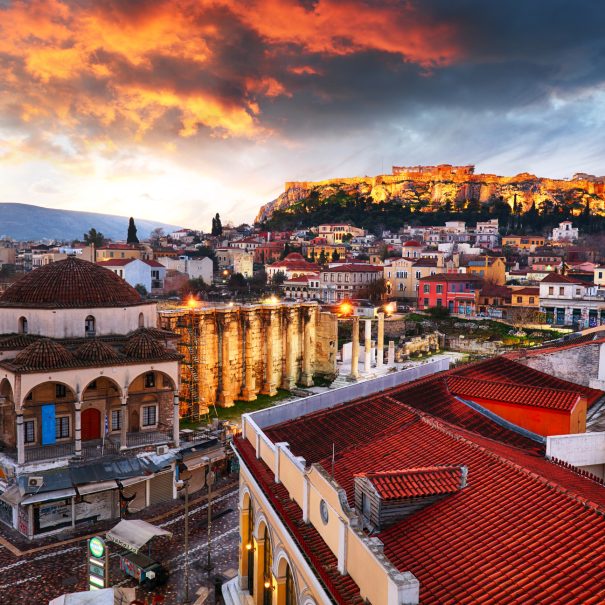
Conclusion
Athens is a city where history and modernity merge in fascinating ways. Majestic ruins meet vibrant street art, millennia-old temples stand just steps away from hip bars and designer shops. Whether you’re stopping for a day on a cruise or staying for several days – Athens has something for everyone.
From famous monuments like the Acropolis or Olympieion to hidden alleys and creative districts like Anafiotika, you’ll feel everywhere that this city is more than just a collection of ancient stones. It’s lively, spirited, and full of stories waiting to be discovered.
Be sure to allow enough time to not just check off tourist highlights but also to immerse yourself in the Greek way of life. Enjoy sunsets on the hills, sample your way through the tavernas, and let yourself be enchanted by the ancient magic of Athens – perhaps with a subtle smile at the traffic chaos. Because one thing’s for sure: humor is as much a part of Athens as good feta is to a salad.
Have fun during your stay in Athens – or as they say in Greek, Kalo taxidi! (Have a good trip!)
FAQs
1. How much time should you plan for a visit to Athens?
If you only want to see the most famous highlights such as the Acropolis, the Parthenon, and the Acropolis Museum, two to three days are sufficient. However, if you’d like to dive deeper into Greek culture, explore hidden neighborhoods or markets, and enjoy some relaxation in cafés and tavernas, you should plan at least one week.
2. Can you explore Athens in a day when arriving from Piraeus (cruise port)?
A day trip is enough to get a first impression and to visit the Acropolis as well as a nearby neighborhood like Plaka. However, there is little time left to truly enjoy the city’s flair or discover other sights. If you want to experience more and immerse yourself deeper in Athenian history and culture, you should plan at least two days.
3. Do I need to buy online tickets in advance for the most popular sights?
It is advisable, especially during high season (spring and summer) and on weekends, to purchase online tickets for the Acropolis or combination tickets for several archaeological sites. This way, you can save waiting time and plan your visit more relaxed.
4. How strict is the dress code in Athens, especially in churches or monasteries?
At most ancient sites like the Acropolis, there is no official dress code. However, when entering Orthodox churches or monasteries, you should make sure to cover your shoulders and knees.
5. How accessible is the city for people with limited mobility or strollers?
Many historic districts and streets in Athens are uneven or have steps, which can pose barriers. Major sights such as the Acropolis and the Acropolis Museum offer partially accessible entrances. It’s worth researching the accessibility of specific attractions in advance. Some metro stations are well equipped, but not every bus line offers unrestricted accessibility.

